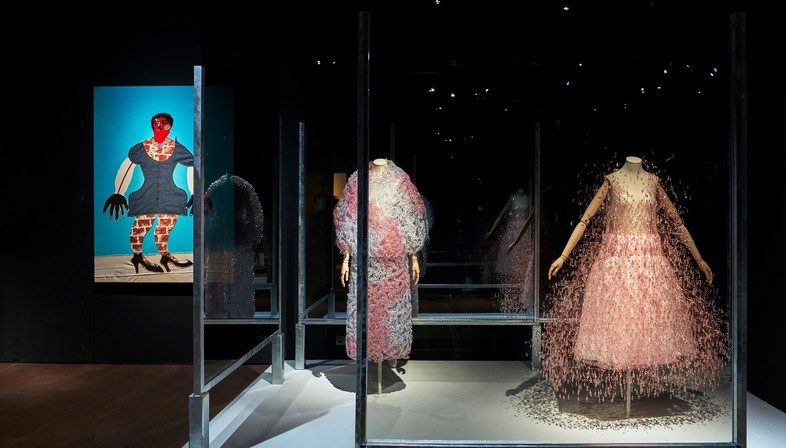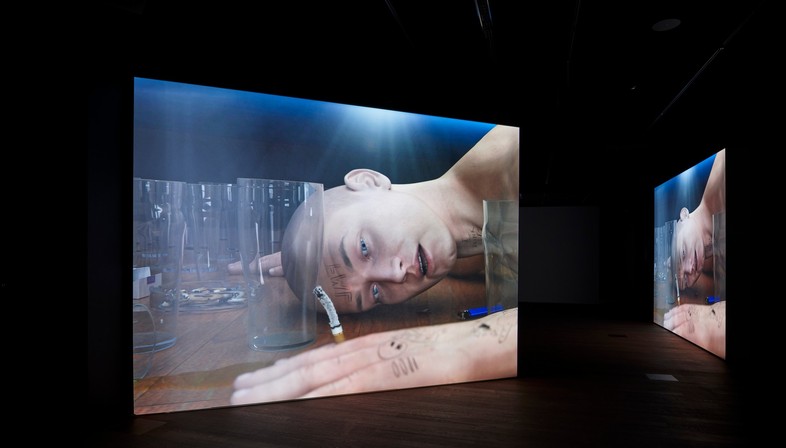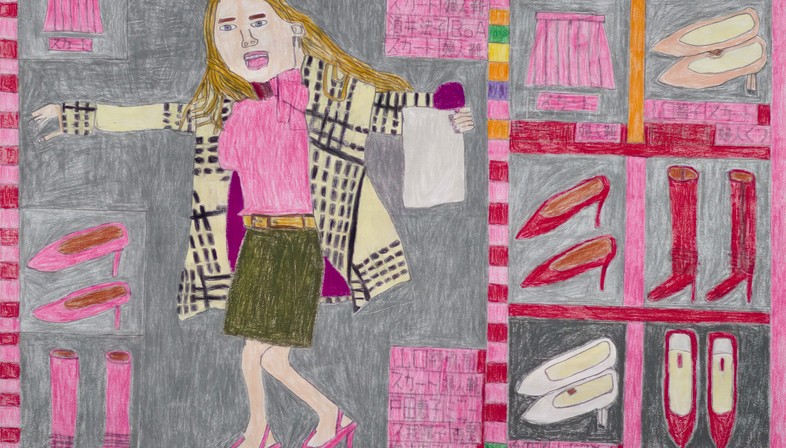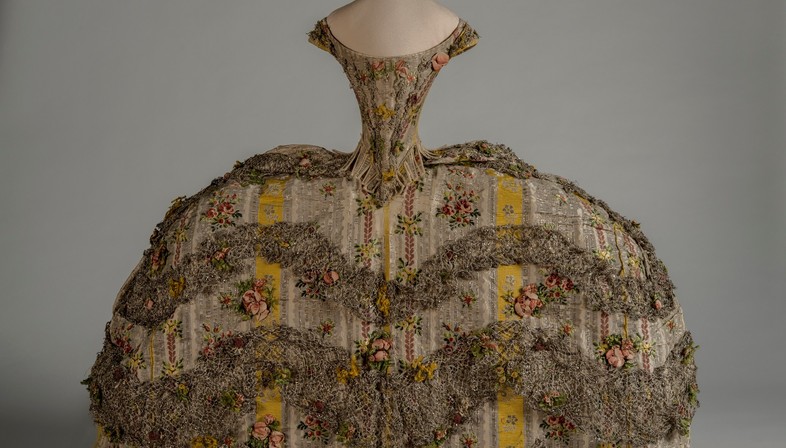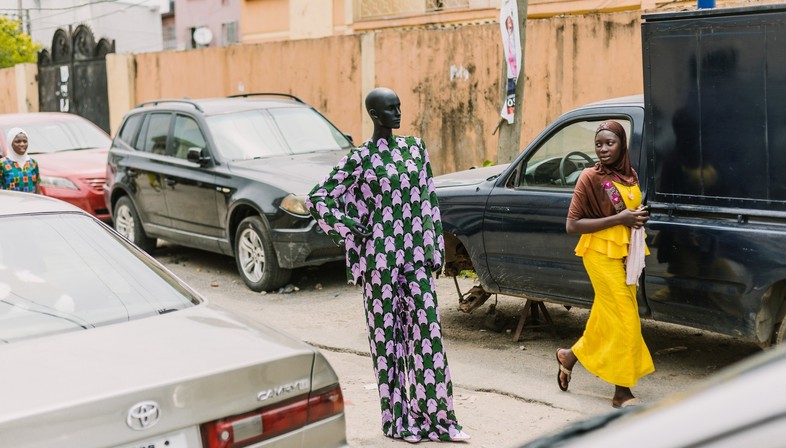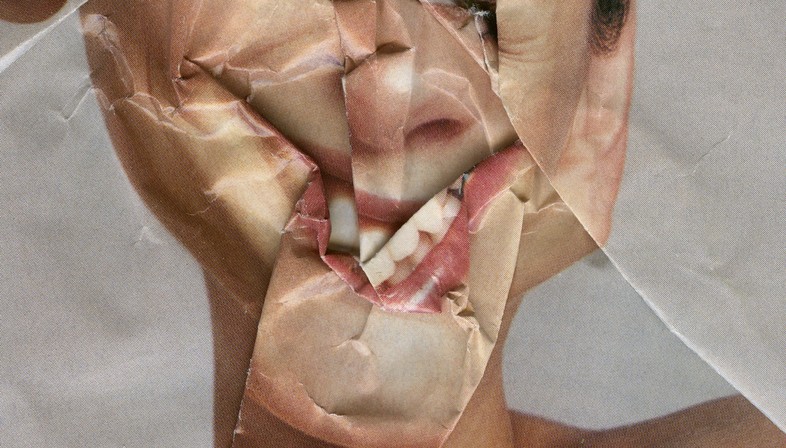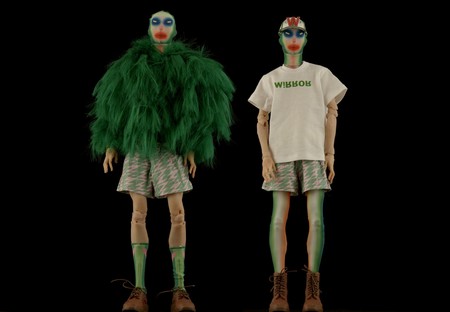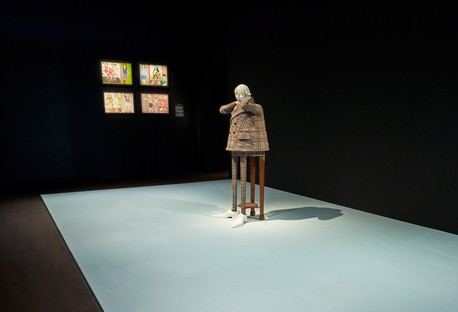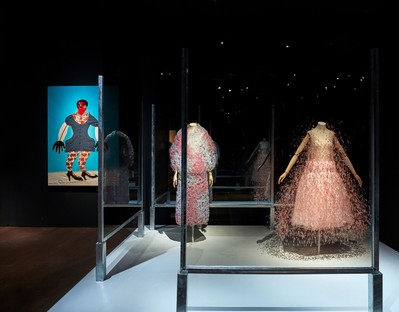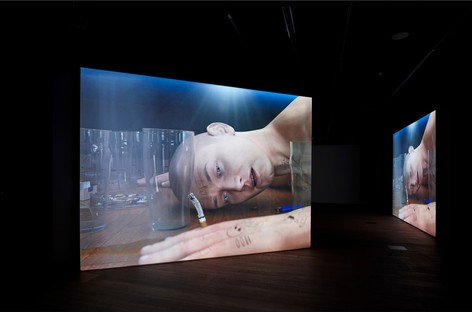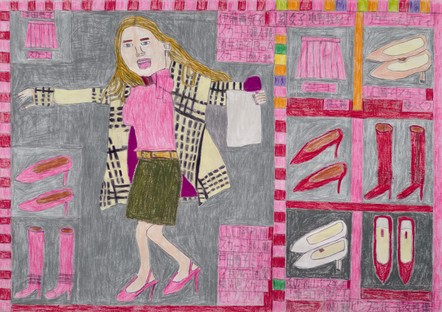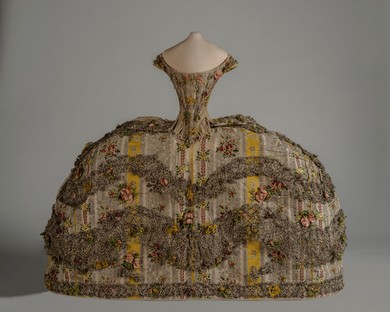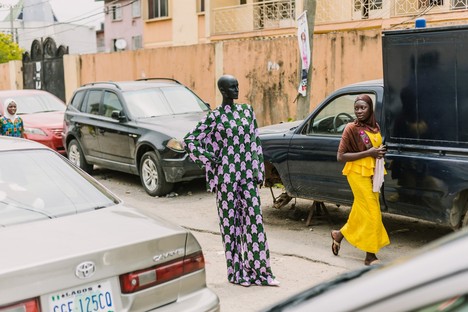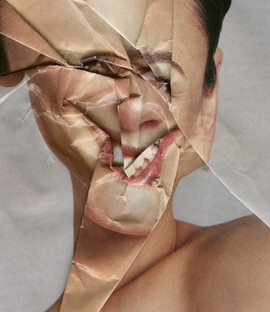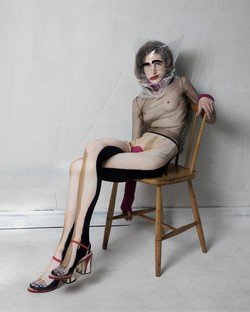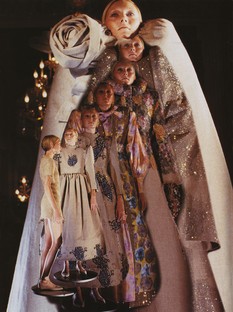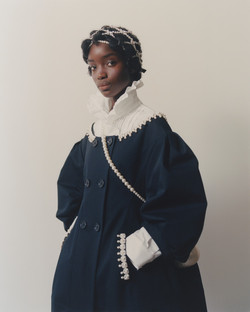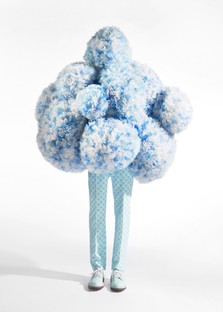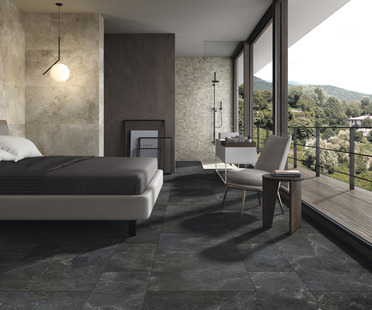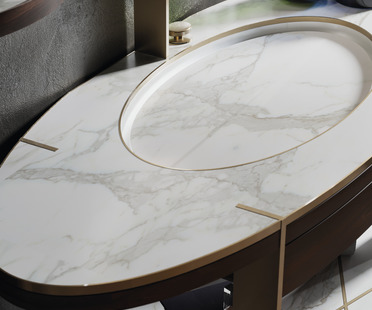08-12-2022
The body seen in the mirror: fashion and psyche
Elisa De Wyngaert, Antonella Galli, Design, Yoon Hee Lamot,
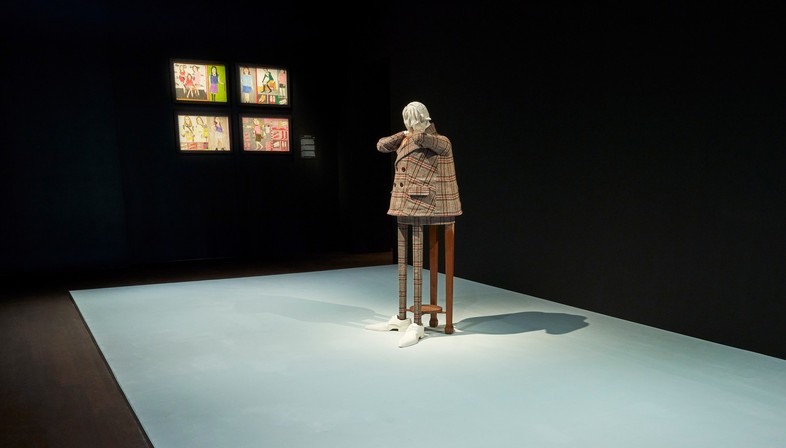
“Mirror, mirror on the wall…”: the famous words of the evil queen in Snow White inspire the title of the new exhibition underway at MoMu, the Fashion Museum in Antwerp, ‘Mirror Mirror – Fashion & the Psyche’, open until 26 February and also extending into Dr. Guislain Museum, in the building in Ghent that used to be Belgium’s oldest psychiatric hospital. In referring to the fairy-tale (which, like all fairy-tales, is a metaphor of human dynamics), the curators focus on the relationship between us and our image, mediated by the apparatus of clothing. Their intention is to focus not on fashion, but on the body itself: how it is understood, interpreted, replicated, dressed, and how fashion is a powerful medium reflecting our interior identity and, above all, our conflicts. “This time, the body is central,” notes MoMu director Kaat Debo, “along with how it is portrayed by fashion designers and artists, in the analogue as well as the digital world around us, with its ever greater presence. We display this in immersive scenography, which will hopefully be able to inspire our visitors.”.
The truly innovative viewpoint of curators Elisa De Wyngaert and Yoon Hee Lamot begins with a critical look at our vision of ourselves. The first section of the exhibition looks at how we perceive ourselves and others, and how clothes can give us shelter, strength or power. The exhibition route begins with reflected, altered images of the human body: the psychological trap of incorrect perception of self that torments our age. Examples include behavioural and dietary disorders caused by the exaggerated ideals of beauty promoted in the media, the sometimes obsessive need to use (increasingly sophisticated) filters to reproduce our image in digital interaction and on social media, and the increasingly frequent cases of Body Dysmorphic Disorder (BDD): an excessive concern with physical defects that are in actual fact imperceptible or even non-existent, leading sufferers to study themselves obsessively in the mirror.
Another deformation afflicting our imagination, increasingly driven by images in advertising, is the fragmentation of the body, particularly the female body, broken up into parts (face, belly, hands, eyes, legs) to encourage us to consume a product that claims to solve a specific problem, as if the body were a set of independent mechanical components. The creations of avant-garde stylists such as Issey Miyake or Noir Kei Ninomiya and wigs made by artist and hair stylist Cyndia Harvey illustrate how we can play with the silhouette to create clothes that come between the body and other people’s eyes, creating a form of protection with fantastic proportions that question our standards of ideal beauty.
The exhibition continues with a big doll-house containing dolls and mannequins from the worlds of art and fashion. Elisa De Wyngaert confesses her attraction toward these objects, “meaningful carriers of different messages”. The section includes specimens of dolls that tailors took with them on their travels selling clothes to the élite all over Europe as long ago as the fourteenth century, as well as a Sleeping Beauty doll that snores, an irreverent creation of Belgian stylist Walter Van Beirendonck created specifically for the occasion. Dolls have represented a female alter ego over the centuries, not always with positive implications: dolls frequently appear in horror films and books, possibly because of their ambiguity as inanimate objects that stand in for living beings.
Even mannequins, which may appear to be neutral tools for work, are in actual fact related to the hysteria and distorted visions arising out of the way we perceive our bodies. Mannequins first appeared in shop windows between 1880 and 1890, and were designed to seduce passers-by, representing the ideal of beauty at various times in their history. Their faces are undefined and almost always represent the standard features of white Caucasians of European origin, tall, thin and frequently unrealistic.
The final section in the exhibition leaves physical space behind: avatars are the dolls (or mannequins) of the digital world, and have the same impact on our imaginations, practically dominating the psyche of their creators. In this final section, avatars appear in immersive works by Ed Atkins, Pierre Huyghe and Melik Ohanian interpreting the dissolution of physicality in an entirely virtual reality.
Antonella Galli
Captions
Exhibition ‘Mirror Mirror – Fashion & the Psyche’
Curators Yoon Hee Lamot and Elisa De Wyngaert
Until 26/02/2023 at MoMu - Fashion Museum, Antwerp & Museum Dr. Guislain, Ghent momu.be
Photos: Courtesy of MoMu Fashion Museum Antwerp
01
Walter Van Beirendonck, ‘Mirror Ghosts Whisper Loud’, Spring-Summer 2021. Miniature models realised and painted by Eli Effenberger-Menagerie Tokyo, miniature clothes by Trois Quart Antwerp, credits videostill: Erik Peiren
02-04
Exhibition ‘Mirror Mirror – Fashion and the Psyche’, MoMu Antwerp, photo Stany Dederen
05
Yasuyuki Ueno, Untitled, 2010, Crayon on paper, Courtesy of the artist and ABCD / ART BRUT Collection Bruno Decharme
06
Fashion doll’s dress, c. 1760s. Collection of Fashion Museum Bath. Purchased with the aid of the V&A Purchase Grant Fund and the National Art Collections Fund, photo: Peter Stone
07
Kenneth Ize, lookbook photographed in Lagos, Nigeria, Spring-Summer 2019, photo: Kene Nwatu
08
Paper Surgery by Veronika Georgieva in collaboration with Stephen j Shanabrook, 2010
09
Dirk Van Saene, Autumn-Winter 2019-20, Art direction & styling: Andrea, model: Mathilde Timmerman, contributing artist: Stef Van Looveren, make-up: Jenneke Croubels, photo: Ronald Stoops
10
Viktor & Rolf, ‘Russian Doll’ collection, Autumn-Winter 1999-00, photo: Bardo Fabiani
11
Simone Rocha, Spring-Summer 2021, photo: Andrew Nuding
12
Walter Van Beirendonck, Spring-Summer 2012, MoMu Collection inv. X234, photo: Stany Dederen










